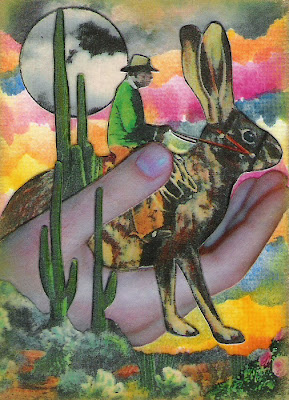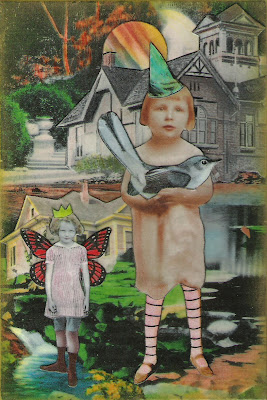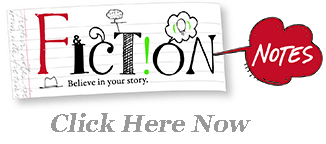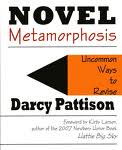So, I’m sitting at the hosptial, waiting for my husband to follow in Harry Smith’s footsteps and get the Couric Procedure (screening colonoscopy). Every wall has a sign asking, “Are you in pain?
Physical pain may or may not be present in a story. But it’s the emotional pain that creates strong stories.
The pain scale is a subjective scale, asking a patient how much s/he hurts. My husband has a higher pain threshold than I do, for sure. And my number 10 is about his number 5. Likewise, there are stories with severe pain scales and some with mild pain scales. A pain scale for a children’s picture book is very different from a pain scale for a horror story.
It’s also helpful to consider the pain scale when thinking about which character is the main character. In general, the character who hurts the most should be the main character. Ask each of your characters to rate their pain at key points throughout the story. Which one has the most pain? Could the story be stronger with a different main character? If there characters with no pain or only mild pain, could you either delete that character or find a way to add emotional pain?
 If you do not have a draft of a story written, follow the steps outlined this month to generate ideas for one now. (You'll have to use your imagination and fill in the missing blanks, but you're good at that, right? After all, you're a writer.....
If you do not have a draft of a story written, follow the steps outlined this month to generate ideas for one now. (You'll have to use your imagination and fill in the missing blanks, but you're good at that, right? After all, you're a writer.....
I appreciate how we each desire to be heard and at the same time fear that what we have to say has no meaning. Desire and fear drown out the muse. Do what you must to silence your ego. Listen to your story instead.
Every story has its own unique energy. At the same time, everything around us follows a similar path. We are born, challenged, come to fullness, and die to who we were. Within the greater pattern, a similar version repeats itself innumerable times throughout our lives.
Today, using the scenes/events you generated on
Day Three, let the energy of your story alight on the pattern itself with the help of the
Universal Story Form (below is the template. On the site is further info)
Plot:
Try for all 7 of the following
or
3 scenes/events At the Least (*)
(Do NOT refer to your manuscript. Use the scenes you generated yesterday. No more than 7.)
- Scene, moment, conflict, dilemma, loss, fear, etc. that forces protagonist to take immediate action -- Inciting Incident
- Scene or event that symbolizes the end of what was. The protagonist's goal shifts or takes on greater meaning and turns the story in a new direction, launching the character into the actual story world itself -- End of the Beginning (*)
- The moment the protagonist consciously make

By: Martha Alderson, M.A.,
on 11/9/2009
Blog:
Plot Whisperer for Writers and Readers
(
Login to Add to MyJacketFlap)
JacketFlap tags:
Climax,
Resolution,
End of the Beginning,
Halfway point,
character transformation Crisis,
how to write memoirs,
major scenes in novels,
screen plays,
Add a tag

Whether you like to work out the elements of your story on the page or are a pre-plotter, everyone benefits from a bit of periodic organization.
See how many of the key scenes you can identify in the story you're imagining, writing, or perfecting:
1) Set-up: The set-up you create in the Beginning makes the journey the protagonist undertakes in the Middle feel inevitable.
2) Inciting Incident: A moment, conflict, dilemma, loss, fear, etc. that forces the protagonist to take immediate action.
3) End of the Beginning: The protagonist's goal shifts or takes on greater meaning and turns the story in a new direction, launching the character into the actual story world itself.
4) Halfway Point: The moment the protagonist consciously makes a total commitment to achieving her goal and does something that signifies she has burned all bridges back and thus can only go forward.
5) Crisis: The all-is-lost moment.
6) Climax: Just as it looks as if all is permanently lost for the protagonist, she saves the day.
For more on key scenes:

Last night, I furiously jotted down notes during my book group's discussion of Stieg Larsson's The Girl with the Dragon Tattoo. Although I avoid reading and watching violence of any kind, I read this book like one possessed. For a couple of days I was addicted to Lisbeth and have thought of her often since then.
Yes, there is an interesting mystery plot, historical plot, political plot, dramatic action plot, and possibly other ones as well, but what drew me in was Lisbeth's plot and ultimate transformation.
In the group, I asked why? What about this character drew us in so deeply and emotionally, especially since the protagonist has such a flat affect and shares so little of herself emotionally -- her internal landscape is essential bare.
The following are comments made by the other writers and one non-writer in the group (my personal thanks to each of you for contributing):
- Rarely in literature is there such an unusual female protagonist survivor with special needs (autistic / aspergers) and one who is so violent
- She doesn't belly up and lay down and take the abuse inflicted upon her by a flawed system and pathological men. She fights back and wins
- She is young and strange and smarter and wiser than the men in the story
- When she is off the page, the story lags. As soon as she appears, the story picks up momentum
- She has been abandoned by everyone in her life, as a reader I couldn't abandon her, too.
- She starts out a victim but does not remain a victim
- Her visits to her mother show her humanity
Writers often encourage me to write a book on character to compliment the book I wrote on plot. I always explain that in my mind character is such a key element to plot that it is impossible to separate the two.
Blockbuster Plots Pure & Simple is based on the belief that plot is made up of dramatic action that overtime transforms the character (Character Emotional Development) to provide meaning (Thematic Significance).
The End of the Beginning (1/4) of Lisbeth's inner plot line happens when her new guardian of the state changes the terms (1/4 mark in this book is page 161, merely twenty pages off the actual page count of 181).
At the Crisis (halfway point) for her inner plot, Lisbeth understands no one is going to save her. Only she can save herself and other women like her. In this scene, Larsson both foreshadows what is to come and also gives the character the insight for what is needed for her ultimate transformation.
In the end, she is able to outwit the villain by standing in her true power. She is able to show her transformed self at the Climax because of the dramatic action that happens to her earlier in the story.
Thematic significance statement: One person no matter how young or wounded is able with cunning and patience to conquer evil.

iTunes users can subscribe to this podcast 
The Oxford Dictionary of Modern Quotations says that movie mogul Sam Goldwyn said:
“What we need is a story that starts with an earthquake and works its way up to a climax.”
Unfortunately for the word climax the dictionary of quotations goes on to admit that this might not actually have been said, but instead invented in the spirit of Sam Goldwyn; a bit of an anticlimax.
But looking at the etymology of climax I can see that if the earthquake was big enough to open big cracks in the ground it might be handy to have a climax around because climax is in fact the Greek word for “ladder.”
Some dictionaries point out how English has anticipated the goal by using climax to mean “the top” when literally climax was merely a tool to get there.
 But I think climax is a great example of those smarty-pants classicists back in the renaissance dragging Latin and Greek words into English.
But I think climax is a great example of those smarty-pants classicists back in the renaissance dragging Latin and Greek words into English.
Climax did make it into Latin from Greek, but before Greek the roots of climax are utterly logical.
Your basic ladder doesn’t work very well without something to lean it against. The American Heritage Dictionary gives an Indo-European root klei that also comes down to us in recline and incline; it means “to lean.”
A ladder leans so the Greeks and Romans called it a climax.
In fact our word lean evolved from the same Indo-European root.
In 1598 the document to first offer up this Latin/Greek word for English use was something called The Arte of English Poesie.
Poesy is a poem so you can tell right away that the author is keen on the power of words, symbolism and metaphor.
In fact the word he is trying to introduce is clyming an invented pseudo-Greek word describing a poetic technique the builds the force of the idea being expressed.
This is not our English word climbing although it only emphasizes my claim that these guys were smart-alecks making a pun like that.
In explaining what he means he actually says a clymax is a “ladder.”
Who “he” is is a bit of a mystery.
For centuries admirers of The Arte of English Poesie didn’t know who wrote it. Then in 1910 a keen observer saw a note that an author had made instructing their printer to use the same typeface as the book by another author named Puttenham.
Since the printer then used the same typeface as appears in The Arte of English Poesie everyone was satisfied that it must have been Puttenham who wrote the thing.
It seems a rocky conclusion to me and it must have to another keen observer also, who spent months establishing that it couldn’t have been Puttenham; and more months building a meticulous list of 14 criteria which only the true author could meet; and then suggesting another guy named Lumley who did meet the criteria.
Of course the results of such research can only represent a climax to the most hard core of History of English Literature students.
Five days a week Charles Hodgson produces
Podictionary – the podcast for word lovers, Thursday episodes here at OUPblog. He’s also the author of
Carnal Knowledge – A Navel Gazer’s Dictionary of Anatomy, Etymology, and Trivia as well as the audio book
Global Wording – The Fascinating Story of the Evolution of English.
ShareThis

By: Martha Alderson, M.A.,
on 8/14/2007
Blog:
Plot Whisperer for Writers and Readers
(
Login to Add to MyJacketFlap)
JacketFlap tags:
The End,
The Middle,
The Beginning,
Crisis,
Climax,
Readers,
Crisis,
The End,
Climax,
The Middle,
The Beginning,
Add a tag
We as writers may start out writing just for ourselves, but even for those who are the most resistant to admit it, we each long for a readership to enjoy our projects.
Once a writer embraces that truth, our relationship to our writing changes.
One way to consider your readers or audience is to get closer to yourself. What kinds of writing do you like? How does your favorite author begin their stories? In scene or in summary? How do your scenes compare to theirs in terms of complexity, interest, excitement, character development, and truth?
What constitutes the Beginning, the Middle and the End of their projects? Can you detect what launches the character(s) into the heart of the story world towards the end of the Beginning? Does the Crisis reveal anything about the character to the his or herself or does the highest point in the story so far function only on the Dramatic Action level alone? How does the Climax show the character doing something they could not have done at the beginning of the story? Is there Thematic Significance to their writing? Is there to yours?
One of the greatest personal benefits of writing is the opportunity to dig deep for our own individual truth. The first draft for many writers skims the surface as we look for meaning and conflict shown in scene and how the characters will show their transformatio over time. Often, what we write in these first drafts is what we've heard before or learned from our family and friends, in school, and through our own reading and the news.
But once we read what we have written, we immediately sense when something does not ring true. There is no better way to learn what is true for us and what is not, than to read our words ourselves first.
As I stated in my plot book for writers, Blockbuster Plots Pure & Simple, my hope for you and for me is that our search for the truth through our writing remains active and honored. We dig for the truth not only for ourselves, but for our future audience as well.
We each share the need to be heard.
We each have something vital to offer.
Readers turn the pages based on their interest in the characters or the excitement caused by the dramatic action or both. The Middle goes on for quite awhile (1/2 of the entire project), and sure, there is lots of conflict, tension, suspense to keep the reader reading, but all those scenes are building to something and that something is the payoff ~~ the Crisis (about 3/4 of the way through the entire book).
It's like climbing a hill. We keep hiking for lots of different reasons, but in the end we're hoping to get to the top = the payoff. In the case of a story, the Crisis is getting to the top. Except, the reader and the character reaches the top only to realize they're only part way there, that another peak awaits them ~~ the Climax ~~ the ulimate payoff for the reader, the crowning glory of the entire project.
Analyzing other books similar to your genre helps writers begin to "feel" the energetic flow of the story and better helps you apply the principles to your own work. Plus, you'll find lots of great hints and tips and ideas when you are reading as a writer, not just a reader.
THE END
The final 1/4 of the project.
The protagonist now knows what's not working and goes in pursuit of what does.
She is challenged every step of the way, only now in the End, she attempts to react in a new transformed way.
Each scene shows her finding her power little by little.
The Climax
The Climax comes almost at The End of the story itself.
The Climax is the biggest scene in the entire story.
The Climax is what the story is all about.
Each scene in the entire book has worked its way steadily toward this moment ~~ the Climax.
The Climax embodies the transformation.
The Climax shows the protagonist doing something she is now only able to do because of each of the tests and trials she underwent in the middle.
The Resolution
The Resolution is the final tie-up of everything.
The End builds at a fevered pitch to the Climax.
The energy drops off after that.
The Resolution brings final closure.
Good Morning:
I'm off to have lunch with a friend today. Debbie literally lives down the street and around the corner from me, but we both have such busy schedules, we don't get to see each other as of often as we would like, or as often as we once did. She's just graduated from nursing school and is working for the first time in about 17 years. I'm desperately trying to "expose" my collage to a world that doesn't seem to be too receptive to or interested in my idea of art. Nevertheless, my constant blarketing and basic marketing keeps me tied up. Between both of our busy days, we manage to sneak a little conversation in on the telephone or see each other at church. Today, we have set aside time for a lunch date. I'm so looking forward to a couple of hours with a dear friend.
In the meantime, I will leave you with a photo of a perfect fuschia blossom that lives on my front porch.

And...a few pictures of my latest prints.


I am so pleased with the quality of these reproductions. Initially, I worried that so much could be lost in translation, being that collage depends on textures and layers. I thought the prints might be lifeless and flat.

I was wrong. They actually look like real life, professional pieces of true art!!
You can find these prints and more at My Etsy Shop.
I hope this finds all of you ready to have a great day.
Until Tomorrow:
Kim
Garden Painter Art
gnarly-dolls











 But I think climax is a great example of those smarty-pants classicists back in the renaissance dragging Latin and Greek words into English.
But I think climax is a great example of those smarty-pants classicists back in the renaissance dragging Latin and Greek words into English.


The Maury Povich show has never been so highly elevated as this.
Perhaps if they advertised their show as a lesson in story writing, they'd get more reaction in their studio audience? (I think not, sadly.)
This post is proof that a person can take anything--even an inane television show--and spin it in a positive way.
Sue--this post made me laugh out loud. I love it, and everything you said was SO TRUE! :)
Ha! I've never thought of those daytime talk soaps as stories...but I do believe they're scripted that way.
One big difference between books and television, though, is that we don't have the benefit of a live studio audience to manipulate the reader. A lot of the tension doesn't come from the participants' problems, which are often trite by themselves, but the crowd reaction to each revelation. I'm sure they have cue words flashing up over the stage saying, "Boo!" "Cheer!" "Aww...." There's a reason the camera is constantly panning around, zeroing in on exaggerated expressions of shock or anger. Without that audience energy, those shows would be terribly awkward. Imagine the teen mamas and baby daddies in an empty white room screaming at each other, with nothing but the camera between them and the viewers at home. That's closer to the situation we have to deal with: just the words on the page and the reader on the couch.
T.K.,
We may not have the reaction of the audience to manipulate reader emotion but we have other "tricks of the trade." These can include:
*The specific setting
*Various sensory details
*Specifics about the characters' emotional reactions
*Verb choices
*Limiting the space through which the character can move
*Limiting the time she has to solve a problem
These are all ways we can ramp up the tension and script our own stories.
--SueBE